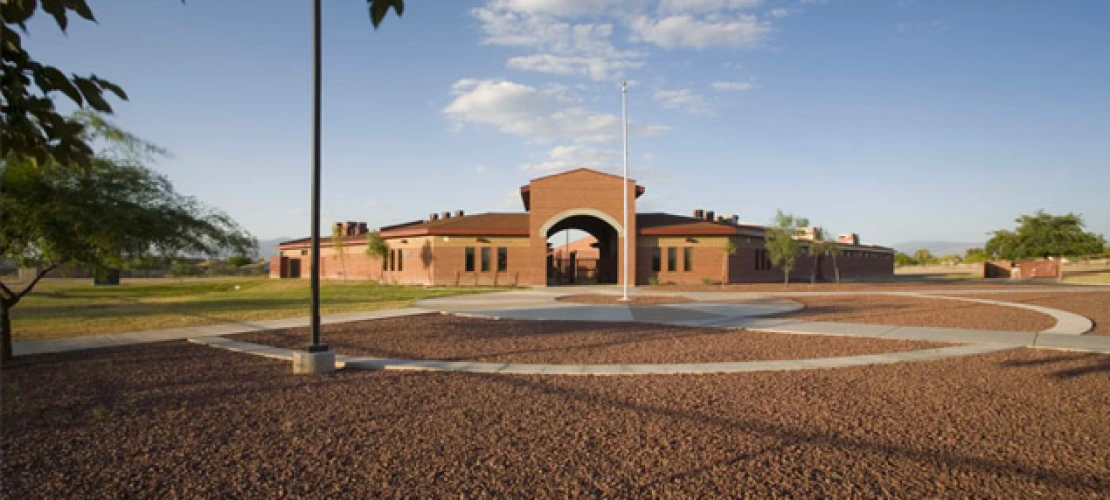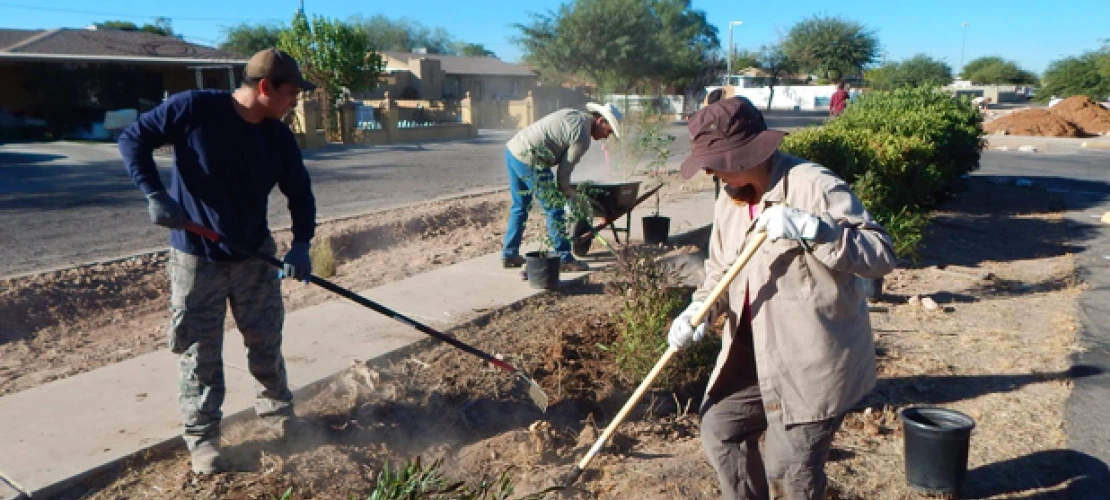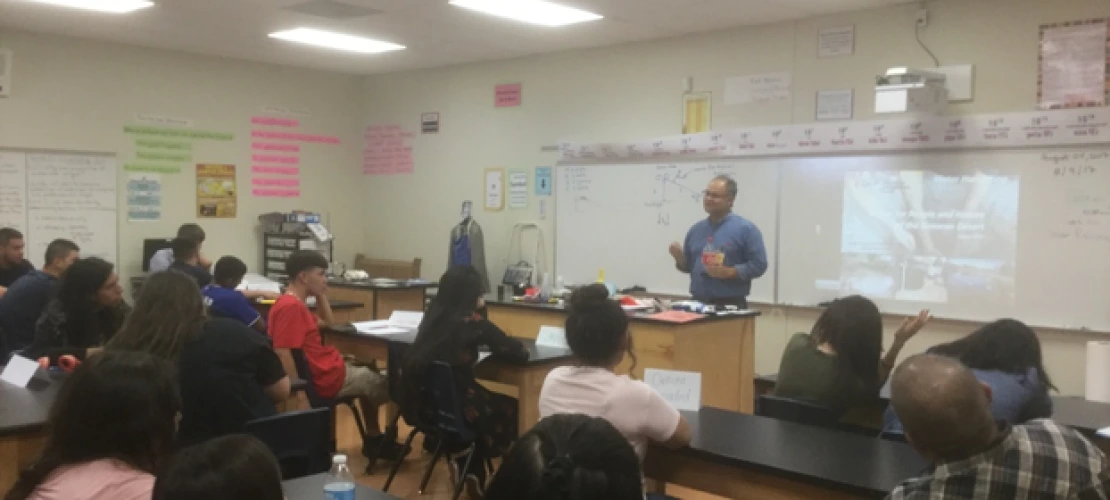By Adriana Zuniga and Andrea K. Gerlak
03/28/18 04:42:pm
The University of Arizona (UA) Green Fund recently approved $25,025 in funding for the project “Addressing environmental injustice around green infrastructure in Tucson, Arizona.” Funding will support green infrastructure (GI) design, implementation, and evaluation at STAR Academic High School (hereafter STAR), an alternative high school in the Sunnyside School District of South Tucson. The project will result in new raingardens and bioswales to capture stormwater running down the street and rainwater from adjacent buildings. The raingardens will include plants, grasses and trees, and may feature artwork, educational signage, and sitting areas.
Students are at the heart of the project. High school students from STAR will participate in landscape design and practices, along with more social science elements of community participation, project evaluation, and policy engagement with local elected officials. UA undergraduate and graduate students will participate in the project through volunteering, internships, independent studies, as well as a few paid positions.
Faculty and students at STAR are excited about potential GI improvements to their school. Dr. Rene Corrales, a science teacher at STAR is teaching GI in his class and has remarked that “the students are eager to start implementing GI in our school.” They have created a new student club called STAR Barrio Verde, tasked to help design and maintain GI efforts and recruit and train new students. Principal Marsha Flores is especially excited about the possibility for training and skill building for high school students, saying “I believe this project can give students career options after they graduate from STAR.”
UA is already hitting the ground running. Professor Bo Yang at the UA School of Landscape Architecture and Planning will use this project in his landscape design class for the Masters in Landscape Architecture program. Through a novel charrette process used in urban planning to capture input from the community, Professor Yang will lead a participatory design process with students, faculty, and administrators at STAR.
This project addresses environmental injustice around GI in Tucson, Arizona, where the neighborhoods on the south side show significantly less vegetation, and experience more heat and flooding.This translates into more energy used in buildings and subsequently higher energy bills, and expensive damage to the urban infrastructure. It builds on an effort to engage with the local community around the social justice dimensions of GI that is presently funded by the Agnese Nelms Haury Program in Environment and Social Justice and led by Professors Andrea K. Gerlak, School of Geography and Development (SGD) and Adriana Zuniga, College of Architecture, Planning, and Landscape Architecture (CAPLA), along with Catlow Shipek and Joaquin Murrieta with Watershed Management Group (WMG), a local NGO that promotes GI in the Santa Cruz Watershed. This project is based on the close collaboration with local organizations including WMG, Tierra y Libertad Organization, (TYLO), and the Sonoran Institute (SI).






